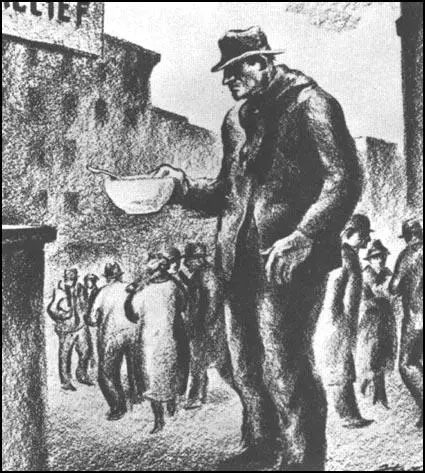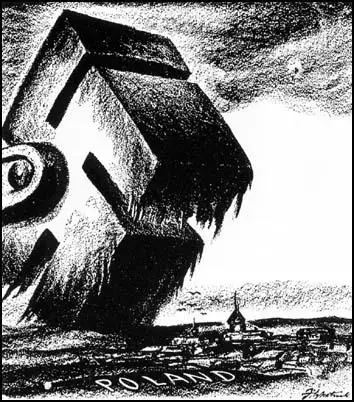Daniel Fitzpatrick
Daniel Robert Fitzpatrick was born in Superior, Wisconsin in 1891. After attending Chicago Art Institute he worked as a cartoonist for the Chicago Daily News and St. Louis Post-Dispatch.
Influenced by the work of Robert Minor, Boardman Robinson, and Rollin Kirby, Fitzpatrick drew with a grease crayon. His work was never funny but as he admitted, the main purpose of his art was to express "sympathy for the underdog".

Ten, St Louis Post-Dispatch (16th January, 1938)
Fitzpatrick was a supporter of women's suffrage and the trade union movement and during the 1930s led the attack against the mergence of fascism in Europe. One critic, Stephen Hess, has argued that Fitzpatrick played a significant role in changing American public opinion on Nazi Germany: "Daniel Fitzpatrick, one of the masters in the use of symbolism, transformed Nazi Germany's swastika into a horrific death machine. As Adolf Hitler's armies marched across Europe in the 1930s, Fitzpatrick used his symbol repeatedly to challenge America to rethink their isolationist stand and enter World War II."

Fitzpatrick twice won the Pulitzer Prize for cartooning: The Laws of Moses and the Laws of Today (1926), and How Would Another Mistake Help? (1955). He retired in 1958 and was replaced on the St. Louis Post-Dispatch by another radical cartoonist, Bill Mauldin. Daniel Robert Fitzpatrick died in 1969.
